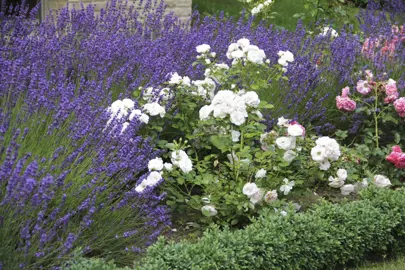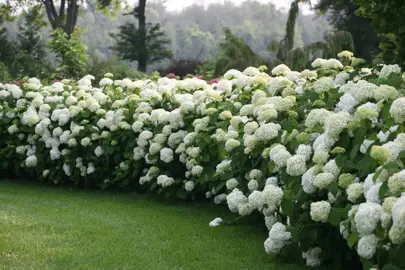
The Plant Company grows, sells, and ships Verbena plants throughout NZ. We pride ourselves on producing high quality plants and seeing the joy from our customers when they receive them. We do hope you enjoy them and support this NZ business that is passionate about Verbena plants.
Why? Our plants are in high demand due to our reputation for delivering high quality products at competitive prices. We may have these in production or be able to source these for you, so please feel free to contact us and our fantastic team will respond to your enquiry. Alternatively, we have a world class plant finder tool that you can use to help find alternative options.
Verbena bonariensis, commonly known as Tall Verbena, is a striking perennial that brings height and elegance to New Zealand gardens. It produces...
“Endurascape Pink Bicolour” is an herbaceous perennial grown for its showy clusters of two-tone pink flowers. The flowers are produced from late...
“Endurascape Red” is an herbaceous perennial grown for its showy clusters of vibrant, bright red flowers. The flowers are produced from late spring...
“Lipstick” is an herbaceous perennial grown for its showy clusters of vibrant, hot pink flowers. The flowers are produced from late spring through...
Verbena hastata 'Alba', also known as White Vervain, is a striking upright perennial that adds elegance to gardens. It produces tall, slender spikes...
Verbena 'Homestead Purple' is a vigorous, low-growing perennial ideal for New Zealand gardens. It forms a lush, trailing mat of deep green foliage...
Verbena 'Merci' is a compact, free-flowering variety ideal for New Zealand gardens, pots, and hanging baskets. It produces masses of vibrant...
“Pink Ballet” is an herbaceous perennial grown for its outstanding flowers and foliage. The very showy, two-tone pink flowers are produced in spring...
“Rapunzel” is an herbaceous perennial grown for its outstanding flowers and foliage. The very showy, hot pink flowers are produced in spring, and are...
Verbena tenuisecta, commonly known as Moss Verbena, is a hardy, low-growing perennial perfect for New Zealand gardens. It forms a dense, spreading...
“Voodoo White” is an herbaceous perennial grown for its outstanding flowers and foliage. The showy, white flowers are produced in spring and are held...
Growing colourful shrubs in your garden delivers a vast range of benefits:
We have the largest variety of Verbena plants and the right one for your space. Our plants have been selected to thrive in NZ’s climate. We grow and stock only the highest quality plants, sourcing them locally, and from NZ’s leading nurseries. Each plant is packed and transported with extreme care, ensuring it arrives to you in the same condition it was in when it left the nursery. If you are wanting to buy Verbena, shop with confidence from the best in the industry.
Verbena, also known as vervain or verveine, is a genus of flowering plants in the family Verbenaceae. It is a diverse group with over 150 species native to warm temperate regions around the world. Verbena plants are known for their attractive clusters of small, colorful flowers that bloom profusely throughout the summer months. They are popular ornamental plants, often used in gardens, borders, and containers.
Here are some interesting facts about Verbena:
Verbena plants offer a combination of beauty, versatility, and ease of care, making them a popular choice for gardeners and homeowners alike. With their vibrant colors, ability to attract pollinators, and diverse applications in landscaping, verbena plants continue to grace gardens and patios worldwide.
Verbena plants thrive in warm, sunny locations with well-drained soil. They prefer full sun or partial shade, but they can tolerate some heat and drought. Here are some specific growing conditions that verbena plants prefer:
By providing these optimal growing conditions, you can help your verbena plants reach their full potential and enjoy their vibrant blooms throughout the summer months. Verbena plants are versatile and adaptable, adding a splash of color and attracting beneficial pollinators to gardens, borders, and containers.
Verbena plants are known for their ability to attract a variety of beneficial insects, including butterflies, bees, and hummingbirds. These pollinators play a vital role in the garden and ecosystem, helping to ensure pollination and fruit set in various plants.
Here's a breakdown of the specific pollinators attracted to verbena:
In addition to these primary pollinators, verbena plants can also attract other beneficial insects, such as lacewings, ladybugs, and parasitic wasps. These insects help to control pests and maintain a healthy ecosystem in the garden.
The ability to attract pollinators is one of the many benefits of planting verbena. By providing a haven for these beneficial insects, gardeners can contribute to the overall health of their gardens and the surrounding environment. Verbena's vibrant blooms and pollinator-friendly nature make it a valuable addition to any garden or landscaping project.
Verbena plants are relatively easy to grow and maintain, but they do have some specific needs for optimal growth and flowering. Here are the essential requirements for verbena plants:
By providing these essential requirements, you can help your verbena plants flourish and add vibrant splashes of colour to your garden throughout the summer months. Verbena's ease of care, resilience, and ability to attract beneficial pollinators make it a popular choice for gardeners and homeowners alike.
Verbena is a versatile and adaptable flowering plant that pairs well with a variety of garden companions. Its vibrant blooms and attractive foliage complement a range of plants, enhancing the visual appeal and ecological diversity of the garden. Here are some excellent companions for verbena:
These are just a few examples of the many plants that grow well with verbena. The specific pairings you choose will depend on your personal preferences and garden conditions. With its versatility and adaptability, verbena can enhance the beauty and ecological diversity of your garden, creating a vibrant and thriving landscape.
Whether or not verbena comes back every year depends on the type of Verbena and the climate.
Verbena is generally considered a fast-growing plant. Most verbena species will reach their mature size within a single growing season. This makes them a popular choice for gardeners who want to add quick bursts of color to their landscapes.
Here are some factors that can affect the growth rate of verbena:
Overall, Verbena is a fast-growing plant that can add a lot of colour and interest to your garden in a short amount of time. With a little care, you can enjoy beautiful Verbena blooms all summer long.
Verbena can grow well in both pots and the ground. However, there are some advantages and disadvantages to each method of growing verbena.
Pots
Ground
Ultimately, the best way to grow verbena depends on your individual preferences and gardening conditions. If you are looking for a low-maintenance option, growing verbena in pots may be a good choice. If you are looking for a more natural appearance, growing verbena in the ground may be a better option.
Whether you need assistance finding the plant you’re looking for or you simply want to know more about who we are and what we do, we invite you to get in touch with us today. A member of The Plant Company team will get back in touch as soon as possible.


